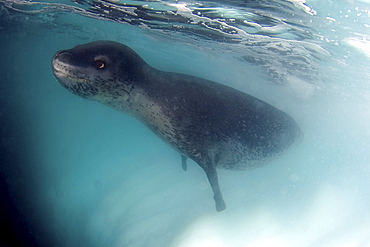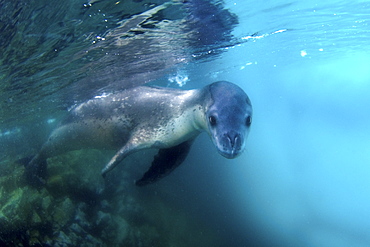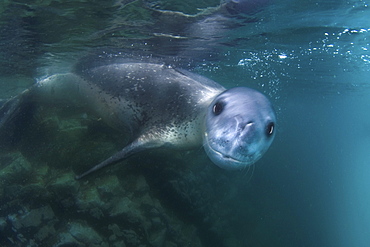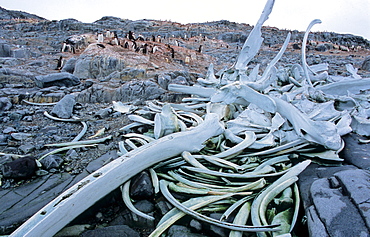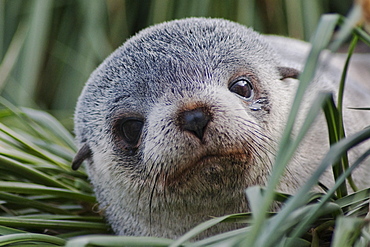Recent searches
Loading...
1350-155 - Circumpolar star trails and aurora over the Red Deer River, Alberta from the Orkney Viewpoint north of Drumheller on May 5, 2018.
1350-116 - This is Comet NEOWISE (C/2020 F3) over the Horseshoe Canyon formation near Drumheller, Alberta on the night iof July 10-11, 2020, taken about 2 a.m. MDT with the comet just past lower culmination with it circumpolar at this time. Warm light from the rising waning gibbous Moon provides the illumination. The comet's faint blue ion tail is just barely visible even in the moonlit sky and low altitude. The glow of summer perpetual twilight at latitude 51.5�8 N still colours the northern horizon despite this being close to the middle of the night.
1350-86 - The eroding formations of Dinosaur Provincial Park, Alberta, lit by the rising gibbous Moon, off camera at right, on April 21/22, 2019. This is looking north, with the stars of the northern sky pivoting around Polaris.
1350-159 - Circumpolar star trails over a grand old barn in southern Alberta, on a fine spring night, May 23, 2018. Illumination is from the waxing gibbous Moon to the south. This is looking north to Polaris at top right. A thunderstorm is on the northern horizon with a lightning bolt as a bonus.
1336-313 - Concentric circumpolar star trail above sand dunes in the Rub al Khali desert, Oman, Middle East
1336-287 - Circumpolar star trail with a tree silhouette and a campfire in the background, Emilia Romagna, Italy, Europe
869-4661 - star tracks circumpolar with polar star in centre exposure 2 h
1060-14 - New born baby humpback whale calf, white in colour, curious and playful. Vava'u Tonga South Pacific
1060-15 - Humpback male and female adults courting above the shallow reef, Vava'u Tonga, South Pacific
1060-12 - Humpback female and her calf Vava'u Tonga in the South Pacific, shot with a fisheye lens
1060-5 - Sperm whale group of juveniles, clicking, Azores Portugal
1060-8 - This new born calf with its mother graceful glide together as the mother protects her calf and the calf learns essential behaviour to survive the open ocean. taken in Vava'u Tonga South Pacific
1060-4 - Common Dolphins approaching clicking and whistling, Azores Portugal
1060-11 - Two adult Humpback whales courting, Vava'u Tonga in the South Pacific
1060-28 - Blue Iceberg floating in the Antarctic peninsula
909-178 - Gentoo Penguin (Pygoscelis papua) colony - some still lying on their eggs, others already have their chicks. Neko Harbour, Antarctica
909-195 - Adult Gentoo Penguin (Pygoscelis papua) checking on its chick while sitting on nest. Cuverville Island, Antarctica
909-188 - Adélie Penguin (Pygoscelis adeliae) parents communicating with both of their hungry chicks. Petermann Island, Antarctica
909-175 - Adult Gentoo Penguin (Pygoscelis papua) with chick sitting on a nest. The chick is flapping its wings. Neko Harbour, Antarctica
909-199 - Adult Gentoo Penguin (Pygoscelis papua) sitting on nest with two eggs. Cuverville Island, Antarctica
909-197 - Adult Gentoo Penguin (Pygoscelis papua) sitting with chick on its nest. Cuverville Island, Antarctica
909-221 - Huge colony of King Penguins (Aptenodytes patagonicus) framed by tussock grass. Salisbury Plain, South Georgia, Subantarctic (rr)
909-171 - Gentoo Penguins (Pygoscelis papua) sitting on iceberg. Danco Island, Antarctic Peninsula
909-200 - Two humpback whales (Megaptera novaeangliae) swimming in front of an icy coastline. Cuverville Island, Antarctica
909-181 - Crabeater Seal (Lobodon carcinophaga) lying and resting on ice. Pléneau Island, Antarctica
909-162 - Huge colony of Adélie Penguins (Pygoscelis adeliae) shuttling food from the sea to the hungry chicks ashore. Paulet Island, Weddell Sea
909-193 - Adult Adélie Penguin (Pygoscelis adeliae) with chick lying down in an Antarctic secenery. Petermann Island, Antarctica
909-157 - Huge colony of Adélie Penguin chicks (Pygoscelis adeliae) waiting for their parents to retrun and feed them. Paulet Island, Weddell Sea
909-186 - Heartshaped hole in an Antarctic blue iceberg. Pléneau Island, Antarctica
909-196 - Adult Gentoo Penguin (Pygoscelis papua) checking on its chick while sitting on nest. Cuverville Island, Antarctica
909-190 - Two Adélie Penguin (Pygoscelis adeliae) chicks enjoying childhood guarded by one of their parents. Petermann Island, Antarctica
909-173 - Penguin pathways melted into the snow . Cuverville Island, Antarctica
909-155 - Adult Adélie Penguin (Pygoscelis adeliae) leaving its chick for finding food. Paulet Island, Weddell Sea, Antarctica
909-202 - Leopard Seal (Hydruga leptonyx) lying on ice and raising its head. Paradise Harbour, Antarctica
909-158 - Adélie Penguin (Pygoscelis adeliae) chick. Paulet Island, Weddell Sea, Antarctica
909-227 - The cleaned-up former whaling station of Grytviken. Grytviken, South Georgia, Subantarctic
909-218 - Two displaying Chinstrap Penguins (Pygoscelis antarcticus). Livingston Island, Antarctica
909-228 - The church situated at the former whaling station of Grytviken. Grytviken, South Georgia, Subantarctic
909-230 - Adult Macaroni Penguin (Eudyptes chrysolophus) with chick below tussock grass. Cooper Bay, South Georgia, Subantarctic
909-204 - Crabeater Seal (Lobodon carcinophaga) lying and resting on ice. Paradise Harbour, Antarctica
909-174 - Adult Gentoo Penguin (Pygoscelis papua) trying to feed its chick with krill. Neko Harbour, Antarctica
909-176 - Two adult Gentoo Penguins (Pygoscelis papua) sitting both on their nests with chicks. Neko Harbour, Antarctica
909-185 - Leopard Seal (Hydruga leptonyx) lying and resting on ice. Pléneau Island, Antarctica
909-206 - Blue ice and icebergs while traveling in Antarctica. Pléneau Island, Antarctica
909-209 - Spyhopping Humpback whale (Megaptera novaeangliae) calf . Wilhelmina Bay, Antarctic Peninsula
909-189 - Adélie Penguins (Pygoscelis adeliae) standing face to face. Petermann Island, Antarctica
909-205 - Whalebones - relicts from early whaling in the Deep South. Wiencke Island, Antarctic Peninsula
909-211 - Humpback whale (Megaptera novaeangliae) mother with calf swimming closeby. Wilhelmina Bay, Antarctic Peninsula
909-166 - Iceberg formations while traveling in the Weddell Sea. Devil Island, Weddell Sea, Antarctica
909-180 - Approach of the Lemaire Channel in beautiful morning sunshine. Antarctic Peninsula
909-194 - Adult Gentoo Penguin (Pygoscelis papua) checking on its chick while sitting on nest. Cuverville Island, Antarctica
909-177 - Gentoo Penguin (Pygoscelis papua) chick kept warm and safe while sitting in nest with one of its parents. Neko Harbour, Antarctica
909-229 - View onto the former whaling station of Grytviken . Grytviken, South Georgia, Subantarctic
909-203 - Leopard Seal (Hydruga leptonyx) lying and resting on ice. Paradise Harbour, Antarctica
909-165 - Iceberg formations while traveling in the Weddell Sea. Devil Island, Weddell Sea, Antarctica
909-219 - Adult Chinstrap Penguin (Pygoscelis antarcticus) with almost grown up chick. Livingston Island, Antarctica
909-172 - Colony of Gentoo Penguins (Pygoscelis papua) in an Antarctic secenery. Cuverville Island, Antarctica
909-226 - Group of King Penguin (Aptenodytes patagonicus) chicks just about to start moulting. Salisbury Plain, South Georgia, Subantarctic
909-184 - Leopard Seal (Hydruga leptonyx) lying and resting on ice. Pléneau Island, Antarctica
909-187 - Adélie Penguin (Pygoscelis adeliae) parents communicating with both of their hungry chicks. Petermann Island, Antarctica
909-208 - Humpback whale (Megaptera novaeangliae) calf showing its head while being curious. Wilhelmina Bay, Antarctic Peninsula
909-167 - Iceberg formations while traveling in the Weddell Sea. Weddell Sea, Antarctica
909-179 - Gentoo Penguin (Pygoscelis papua) chicks kept warm and safe while sitting in nest with one of its parents. Neko Harbour, Antarctica
909-169 - Glacier front and brash ice in Antarctica. Danco Island, Antarctic Peninsula
909-210 - Spyhopping Humpback whale (Megaptera novaeangliae) adult. Wilhelmina Bay, Antarctic Peninsula
909-161 - Adult Adélie Penguin (Pygoscelis adeliae) feeding its chick with krill. Paulet Island, Weddell Sea
909-182 - Crabeater Seal (Lobodon carcinophaga) lying and resting on ice. Pléneau Island, Antarctica
909-223 - King Penguin (Aptenodytes patagonicus) chick in moult. Salisbury Plain, South Georgia, Subantarctic
909-201 - Leopard Seal (Hydruga leptonyx) lying and resting on ice. Paradise Harbour, Antarctica
909-153 - Geological formation in the cliffs above Brown Bluff. Brown Bluff, Antarctic Sound, Antarctica
909-225 - King Penguin (Aptenodytes patagonicus) teenagers starting to display. Salisbury Plain, South Georgia, Subantarctic
909-170 - Gentoo Penguins (Pygoscelis papua) sitting on iceberg. Danco Island, Antarctic Peninsula
909-159 - Adélie Penguin (Pygoscelis adeliae) chick. Paulet Island, Weddell Sea, Antarctica
909-154 - Landing on the Antarctic continent. Brown Bluff, Antarctic Sound, Antarctica
909-192 - Two Adélie Penguin (Pygoscelis adeliae) chicks enjoying childhood guarded by one of their parents. Petermann Island, Antarctica
909-164 - Huge colony of Adélie Penguin chicks (Pygoscelis adeliae) waiting for their parents to retrun and feed them. Paulet Island, Weddell Sea
909-207 - Humpback whale (Megaptera novaeangliae) showing its fluke in front of a cruising zodiac. Wilhelmina Bay, Antarctic Peninsula
909-163 - Adult Adélie Penguin (Pygoscelis adeliae) chased by its chick in demand for food. Paulet Island, Weddell Sea, Antarctica
909-222 - Walking adult King Penguin (Aptenodytes patagonicus) accompanied by a chick . Salisbury Plain, South Georgia, Subantarctic
909-183 - Crabeater Seal (Lobodon carcinophaga) lying and resting on ice. Pléneau Island, Antarctica
909-217 - Humpback whale (Megaptera novaeangliae) calf swimming closeby. Livingston Island, Antarctic Peninsula
909-191 - Two Adélie Penguin (Pygoscelis adeliae) chicks enjoying childhood guarded by one of their parents. Petermann Island, Antarctica
909-220 - Northern Giant Petrel (Macronectes halli) scaring off a big group of Gentoo Penguin (Pygoscelis papua) chicks. Livingston Island, Antarctic Peninsula
909-156 - Huge colony of Adélie Penguin chicks (Pygoscelis adeliae) waiting for their parents to return and feed them. Paulet Island, Weddell Sea
909-224 - Face of a King Penguin (Aptenodytes patagonicus) chick with its brownish plumage . Salisbury Plain, South Georgia, Subantarctic
909-168 - Hope Bay hut. Hope Bay was discovered in 1902 by the Swedish expedition led by Otto Nordenskjöld. He named it Hope Bay, after three of his party inadvertently wintered there during 1903; they were dropped off not long before their ship, Antarctic, sank and the sound beyond the bay bears the name of their doomed vessel. Their makeshift stone hut stands near the dock – it was largely rebuilt over the summer season of 1966-67. Hope Bay, Antarctic Sound, Weddell Sea
909-198 - Adult Gentoo Penguin (Pygoscelis papua) sitting on nest with one hatched chicken and one still being in egg. Cuverville Island, Antarctica
909-160 - Adult Adélie Penguin (Pygoscelis adeliae) feeding its chick with krill. Paulet Island, Weddell Sea
909-231 - Adult Macaroni Penguins (Eudyptes chrysolophus) walking among tussock grass. Cooper Bay, South Georgia, Subantarctic
917-274 - A pair of Cape Petrels, Daption capense, soaring with icebergs in the background, Weddell Sea, Antarctica.
917-237 - Antarctic Fur Seal pup, Arctocephalus gazella, portrait, South Georgia, South Atlantic Ocean.
917-275 - Snow Petrel, Pagodroma nivea, flying above icebergs, Weddell Sea, Antarctica.
917-242 - Leopard Seal, Hydrurga leptonyx, more commonly seen hauled out on ice further South, this is a rare sighting on a South Georgia beach, South Atlantic Ocean
917-239 - Antarctic Fur Seal, Arctocephalus gazella, roaring, South Georgia, South Atlantic Ocean.
917-238 - Antarctic Fur Seal pup, Arctocephalus gazella, portrait, South Georgia, South Atlantic Ocean.
















